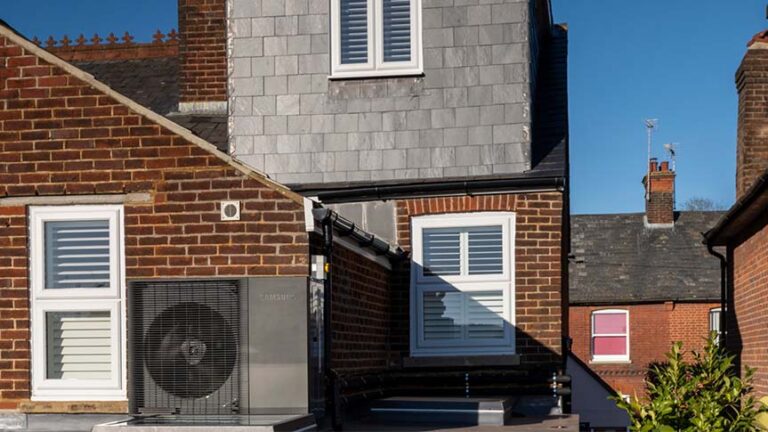Three barriers to energy efficiency and how to overcome them

With the UK government having recently stated its ambitious net-zero carbon target by 2050, there has been a much-needed refocusing on the country’s sustainability agenda.
Though the onus is on the government to lead the energy transformation with strengthened policy and investment, the private sector too has an increasing responsibility to reduce carbon emissions through improved energy efficiency.
And this is not just in the face of climate change. The cost of modernising our energy system is being passed to businesses and consumers through rising energy bills.
Making your organisation more sustainable is a sure-fire way of lessening the impact of rising costs, as well as reducing your environmental impact.
However, as SMS Senior Energy Management Consultant, Mark Taylor, explains below, there are certain common obstacles to overcome when embarking on an energy efficiency project…
On the face of it, energy efficiency is a straightforward task. An organisation, or at least its energy manager, needs to ensure that their equipment/processes/buildings are:
• running at the right times
• controlled to suit the requirements
• insulated if related to heat transfer
• replaced if outdated (inefficient)
As a sector we have a great opportunity to make a demonstrable impact in the current climate. While the UK has stated its net-zero ambitions by 2050, individual organisations and councils are also following suit, declaring a Climate Emergency and aiming for carbon neutrality by 2030.
So, the drivers are there and the task is straightforward. Job done? Not quite. There are often barriers in the way of achieving a more energy efficient organisation. Luckily, these can be overcome with the right approach.
1. Making an efficiency proposal understandable.
An energy efficiency business case is competing for investment funding against a range of other investments (IT upgrades, marketing and sales initiatives, new business development). These other investments and their benefits will be more easily understood and are more akin to business as usual activities.
Combined within an energy efficiency business case will be references to energy uncertainties:
• The Negawatt, or the amount of energy not used due to the implementation of an energy conservation project, often modelled using a regression formula;
• The future unit rate of energy;
• The future (rising) cost of pass through charges (relating to energy supply infrastructure and government policy);
• Practical implementation and operational and maintenance risks.
It is the role of those proposing an energy-efficient investment to give sufficient comfort to the decision maker to allow them to invest. As a breed, energy professionals will revert to technical jargon and physics to explain complex concepts. This is to be avoided at all costs when proposing an investment to a decision maker.
One way to give comfort and avoid the pitfalls of complex concepts and jargon is by running a representative pilot program to demonstrate the value, or starting with a less complicated technology that is easily understood (lighting upgrade). Trust in the ability of energy efficiency to deliver can be gained from previous project success.
2. Condition of existing infrastructure
All energy efficiency projects are dependent on the quality of the surrounding infrastructure, for example the existing wiring for a lighting upgrade or condition of the central Heating Ventilation and Air Conditioning (HVAC) plant for control upgrades. In most circumstances where poor infrastructure could affect an efficiency project, the state of the system affects the quality of service and cost of service to the host organisation. For example, high reactive maintenance costs for a boiler house in poor state of repair.
The maintenance function within an organisation may not have complete or accurate information about individual assets (an asset register that has partial or out of date information). The maintenance activity on an estate may be largely reactive, with a lower proportion of activity being planned, and predictive maintenance a future aspiration.
Opportunities for investment in the remediation of poor infrastructure can be easily identified and included within a program, increasing the value of the project by assigning a value to the lost service provision and higher service costs.
3. Interference, outside of programme control
There may be outside influences leading to a programme not achieving its full potential, by individuals interacting with a new system in an unexpected way. An example of Jevons paradox is heating consumption going up after insulating a home due to the building being able to retain heat better.
In a similar way, the maintenance function of an estate needs to be considered when implementing a change. The function will often be a mix of internal maintenance teams undertaking the less technical aspects of estate maintenance whilst managing the more complex activities, subcontracting these to third parties. In this situation it can be difficult to ensure that a maintenance party does not override the changes made to the system due to the quantity and size of organisations involved in maintaining equipment.
The ability to track changes made to a system is possible, for example sending out automated alerts that identify when a system is outside of set parameters within a controls project. This level of supervision can be valuable for an estate management team as it can also include the ability to read and report system fault codes, enabling a change to a predictive maintenance regime with quantifiable benefits.
The key to avoiding barriers is being able to demonstrate the value of the mitigation across the business.
At SMS, we are committed to helping business customers improve their understanding of energy performance in their operations and to plan energy reduction programmes. Through high-grade energy audits and consultancy, we make achieving compliance with regulations such as ESOS an integral element of a wider energy management strategy.


